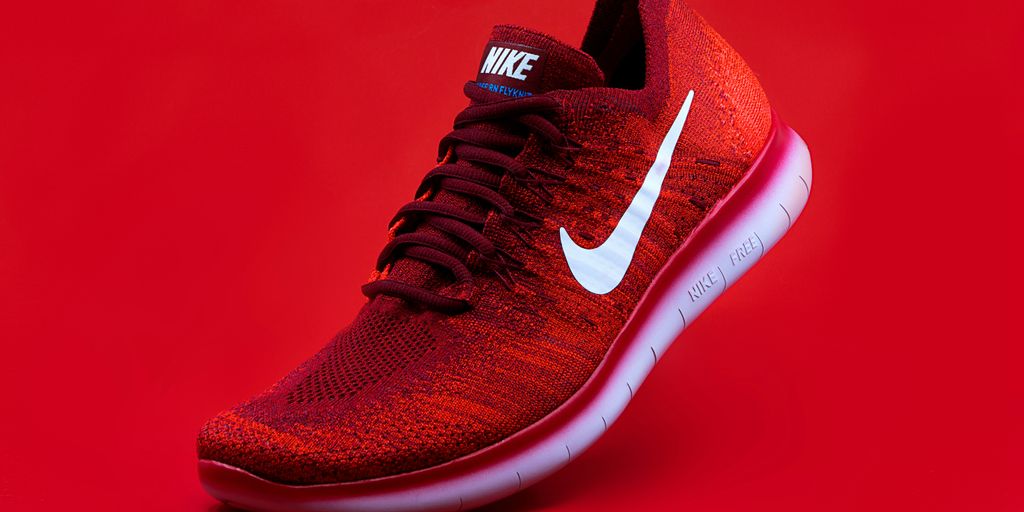Alternative Energy
How to Build an Eco-Friendly Shoe Collection

Building an eco-friendly shoe collection is more than just a trend; it’s a vital step towards protecting our planet. With the rise of sustainable materials and ethical manufacturing practises, consumers can make choices that not only benefit their wardrobes but also the environment. This guide will explore the significance of eco-friendly footwear, the materials used, and how to identify truly sustainable options.
Key Takeaways
- Eco-friendly shoes help reduce environmental harm and promote sustainability.
- Materials like cork, organic cotton, and recycled plastics are key to making eco-friendly footwear.
- Brands such as Allbirds and Veja are leading the way in sustainable shoe production.
- Understanding certifications and ethical practises can help you choose genuinely sustainable shoes.
- Caring for your eco-friendly shoes can extend their lifespan and reduce waste.
Understanding the Importance of an Eco-Friendly Shoe Collection
Environmental Impact of Traditional Footwear
Traditional footwear often relies on materials and processes that harm the environment. The production of conventional shoes contributes significantly to pollution and waste. For instance, the use of synthetic materials can lead to non-biodegradable waste that lingers in landfills for years. Here are some key points to consider:
- High carbon emissions during production.
- Toxic chemicals used in manufacturing.
- Non-recyclable materials that add to landfill waste.
Benefits of Eco-Friendly Shoes
Switching to eco-friendly shoes offers numerous advantages:
- Reduced environmental footprint.
- Use of sustainable materials that are biodegradable.
- Support for ethical manufacturing practises.
How Sustainable Shoes Help the Planet
Sustainable shoes are designed to minimise their impact on the environment. They often use materials that are not only eco-friendly but also promote better practises in the industry. Here’s how they contribute positively:
- Lower carbon emissions during production.
- Support for fair labour practises.
- Encouragement of recycling and waste reduction.
By choosing eco-friendly footwear, you are not just making a fashion statement; you are also making a commitment to a healthier planet. Every step counts towards a more sustainable future!
Key Materials Used in Eco-Friendly Shoes
When it comes to building an eco-friendly shoe collection, the materials used are crucial. Here are some of the key materials that make sustainable footwear a better choice for the planet:
Cork Leather
Cork leather is a fantastic option for eco-friendly shoes. It is made from the bark of cork oak trees, which can be harvested without harming the tree. This means cork is a renewable resource. Additionally, cork leather is biodegradable, making it a great choice for those looking to reduce their environmental impact.
Organic Cotton
Organic cotton is grown without harmful pesticides or chemicals, making it a safer choice for both the environment and the people who work with it. This material is soft, durable, and hypoallergenic, which is why it’s becoming increasingly popular in sustainable footwear.
Recycled Plastics
Recycled plastics, often sourced from bottles or ocean waste, are transformed into yarn or fabric for shoes. This not only helps reduce waste but also lowers the carbon footprint associated with producing new materials. Using recycled plastics is a smart way to contribute to a cleaner planet.
| Material | Benefits |
|---|---|
| Cork Leather | Renewable, biodegradable |
| Organic Cotton | Grown without chemicals, hypoallergenic |
| Recycled Plastics | Reduces waste, lowers carbon footprint |
Choosing eco-friendly materials is not just about the shoes; it’s about making a positive impact on the environment.
By opting for these materials, you can help support a more sustainable future while enjoying stylish and comfortable footwear.
Top Eco-Friendly Shoe Brands to Consider
When it comes to building an eco-friendly shoe collection, choosing the right brands is essential. Here are some of the top brands that are making a difference:
Allbirds
Allbirds is known for its commitment to sustainability. Their shoes are made from natural materials like merino wool and recycled bottles. This brand focuses on transparency and ethical sourcing, making it a great choice for eco-conscious consumers.
Veja
Veja is another standout brand. Their shoes, such as The Condor, are made from 53% recycled plastic and organic materials. They ensure that their rubber is sourced from responsibly managed forests in Brazil, promoting both sustainability and fair trade.
Adidas X Parley
Adidas X Parley collaborates with environmental organisations to create shoes from recycled ocean plastic. This initiative not only helps reduce waste but also raises awareness about ocean pollution. Their designs are stylish and eco-friendly, making them a popular choice among consumers.
Other Notable Brands
- TOMS Earthwise: Known for their one-for-one model, they use vegan and eco-friendly materials.
- Sanuk: Offers laid-back styles made from hemp and recycled materials.
- Timberland: Aims for a net-positive impact on the environment by 2030.
These brands are not just about style; they are committed to making a positive impact on the planet. By choosing eco-friendly footwear, you contribute to a more sustainable future.
How to Identify Truly Sustainable Shoes
When it comes to choosing shoes that are truly sustainable, there are several key factors to consider. Understanding these elements can help you make informed choices that benefit the planet.
Certifications to Look For
- Look for recognised certifications such as B Corp, Fair Trade, or specific material certifications. These labels indicate that the brand meets certain sustainability standards.
- Check if the brand is transparent about its sourcing and manufacturing processes.
- Ensure the certifications align with your values, such as organic or vegan standards.
Ethical Manufacturing Practises
- Investigate whether the brand prioritises safe working conditions and fair wages for its workers.
- Look for brands that maintain long-term relationships with their suppliers to ensure ethical practises.
- Consider brands that are open about their supply chain and any areas for improvement.
Transparency in Supply Chains
- Seek brands that openly share information about where their materials come from and how their shoes are made.
- Brands that provide details about their environmental impact are often more trustworthy.
- Avoid brands that are vague about their practises, as this may indicate potential ethical issues.
Understanding how shoes are made and the materials used is crucial for making eco-friendly choices. By focusing on these aspects, you can contribute to a more sustainable future.
By keeping these points in mind, you can confidently choose footwear that aligns with your values and supports a healthier planet.
The Role of Design in Sustainable Footwear
Design for Deconstruction
Designing shoes with deconstruction in mind is crucial for sustainability. This means that each material used should be easy to separate at the end of the shoe’s life. By doing this, repairs and recycling become much simpler. Here are some key points to consider:
- Use materials that can be easily taken apart.
- Avoid strong adhesives that make recycling difficult.
- Ensure that every component can be identified and separated.
Durability and Longevity
Creating shoes that last is essential. Durability reduces waste and the need for frequent replacements. Consider the following:
- Choose high-quality materials that withstand wear and tear.
- Test prototypes extensively to find the most durable options.
- Offer care products, like biodegradable shoe polish, to help customers maintain their footwear.
Circular Design Models
Circular design is about creating shoes that can be reused or recycled. This approach helps to minimise waste. Here are some strategies:
- Design shoes that can be easily repaired.
- Use materials that are biodegradable or recyclable.
- Encourage customers to return old shoes for recycling.
Sustainable footwear design is not just about aesthetics; it’s about creating a positive impact on the planet. By focusing on sustainable practises, designers can lead the way in reducing the environmental footprint of the footwear industry.
In conclusion, the role of design in sustainable footwear is vital. By prioritising deconstruction, durability, and circular models, we can create shoes that are not only stylish but also kind to our planet.
Highlighted Context
Explore our extensive collection of footwear with free shipping on all orders. Shop now for stylish options for men and women, along with leather clothes, bags, and sunglasses. Visit us for a seamless shopping experience.
Innovative Ideas for Eco-Friendly Shoe Making
Using Natural Rubber
Natural rubber is a fantastic choice for eco-friendly shoes. It is harvested from rubber trees without harming them, making it a renewable resource. This material is durable and biodegradable, which means it can break down naturally at the end of its life cycle.
Incorporating Hemp
Hemp is another excellent material for sustainable footwear. It grows quickly without the need for harmful chemicals. Hemp shoes are breathable, long-lasting, and hypoallergenic, making them a great option for those with sensitive skin. Here are some benefits of using hemp:
- Chemical-free growth
- Durability
- Temperature regulation
Exploring Pineapple Leather
Pineapple leather, known as Pinatex, is made from the fibres of pineapple leaves. This innovative material is not only cruelty-free but also requires less water and produces less waste during production. It offers a stylish alternative to traditional leather while being environmentally friendly.
Pineapple leather is a great example of how we can use agricultural waste to create fashionable and sustainable products.
Summary of Innovative Materials
| Material | Benefits |
|---|---|
| Natural Rubber | Durable, biodegradable |
| Hemp | Chemical-free, breathable, durable |
| Pineapple Leather | Cruelty-free, low water usage, stylish |
By exploring these innovative materials, we can significantly reduce the environmental impact of our footwear choices. Each option not only supports sustainability but also offers unique benefits that enhance the overall shoe experience.
Conclusion
Incorporating these materials into shoe design is a step towards a more sustainable future. As consumers, we can make a difference by choosing eco-friendly options that respect our planet and its resources.
How to Maintain and Care for Your Eco-Friendly Shoes
Taking care of your eco-friendly shoes is essential to ensure they last longer and remain in good condition. Here are some tips to help you maintain them effectively.
Cleaning Tips for Different Materials
- Cork Leather: Wipe with a damp cloth and let it air dry. Avoid soaking it in water.
- Organic Cotton: Machine wash on a gentle cycle and air dry to prevent shrinkage.
- Recycled Plastics: Clean with mild soap and water; they are usually more durable and can handle a bit more scrubbing.
Repairing and Resoling
- Check for Damage: Regularly inspect your shoes for any signs of wear.
- Use Eco-Friendly Glue: For minor repairs, use a non-toxic adhesive to fix small tears.
- Visit a Cobbler: For resoling, find a local cobbler who uses sustainable materials to extend the life of your shoes.
Proper Storage to Extend Lifespan
- Store your shoes in a cool, dry place away from direct sunlight.
- Use shoe trees to maintain their shape and prevent creasing.
- Keep them in breathable bags to avoid moisture build-up.
Maintaining your eco-friendly shoes not only helps them last longer but also reduces waste, making a positive impact on the environment. Every small effort counts!
By following these simple steps, you can ensure that your eco-friendly shoes remain in great shape while contributing to a more sustainable future. Remember, taking care of your footwear is just as important as choosing the right materials.
The Future of Sustainable Footwear

As we look ahead, the world of sustainable footwear is evolving rapidly. The demand for eco-friendly shoes is on the rise, driven by a growing awareness of environmental issues. Here are some key trends shaping the future of this industry:
Technological Advancements
- 3D Printing: This technology allows for custom designs and reduces waste in production.
- Smart Materials: Innovations in materials that adapt to the wearer’s needs are becoming more common.
- Recycling Technologies: Improved methods for recycling old shoes are being developed, making it easier to create new products from waste.
Trends in Eco-Friendly Shoe Design
- Minimalist Designs: Simple, functional designs are gaining popularity, focusing on durability and longevity.
- Biodegradable Materials: More brands are using materials that break down naturally, reducing landfill waste.
- Circular Fashion: The concept of designing shoes for a full lifecycle, including recycling, is becoming mainstream.
Consumer Demand and Market Growth
The sustainable footwear market is projected to grow significantly. According to recent estimates, it could reach USD 8 billion by 2025. Factors contributing to this growth include:
- Increased consumer awareness about environmental issues.
- A shift towards ethical consumerism, where buyers prefer brands that align with their values.
- Government regulations promoting sustainable practises in the fashion industry.
The future of sustainable footwear looks promising, with brands increasingly prioritising eco-friendly practises and materials. By making informed choices, consumers can support this positive change and help protect our planet.
In summary, the future of sustainable footwear is bright, with innovations and consumer demand driving the industry towards a more eco-friendly direction. As we embrace these changes, we can all play a part in creating a more sustainable world.
Making the Switch: Transitioning to an Eco-Friendly Shoe Collection
Transitioning to an eco-friendly shoe collection is a meaningful step towards a more sustainable lifestyle. Here’s how you can make the switch effectively:
Assessing Your Current Footwear
- Evaluate your existing shoes: Check which pairs you wear regularly and which ones you can donate or recycle.
- Identify non-eco-friendly materials: Look for shoes made from synthetic materials or those that are not biodegradable.
- Consider your needs: Think about what types of shoes you need for different occasions, such as casual, formal, or sports.
Planning Your Purchases
- Research eco-friendly brands: Look for companies that prioritise sustainable practises and materials.
- Set a budget: Eco-friendly shoes can sometimes be pricier, so plan your spending accordingly.
- Prioritise quality over quantity: Invest in durable shoes that will last longer and reduce waste.
Where to Shop for Sustainable Shoes
- Local eco-friendly stores: Support local businesses that focus on sustainable products.
- Online marketplaces: Explore websites dedicated to eco-friendly brands.
- Second-hand shops: Consider buying pre-owned shoes to reduce your carbon footprint.
Making the switch to eco-friendly shoes not only benefits the environment but also supports ethical practises in the footwear industry. Every small change counts!
By following these steps, you can gradually build a shoe collection that aligns with your values and contributes positively to the planet. Remember, it’s about making informed choices and supporting brands that care for our environment.
The Social Impact of Sustainable Shoe Production

Fair Labour Practises
Sustainable shoe production focuses on fair labour practises. This means ensuring that workers are paid fairly and work in safe conditions. Many brands are now committed to:
- Providing fair wages
- Ensuring safe working environments
- Offering benefits like healthcare and education
Community Engagement
Brands that produce eco-friendly shoes often engage with local communities. This can include:
- Supporting local artisans and craftspeople
- Investing in community projects
- Creating job opportunities in developing areas
Supporting Ethical Brands
By choosing to buy from sustainable shoe brands, consumers can make a positive impact. This includes:
- Reducing the demand for fast fashion, which often exploits workers
- Encouraging brands to maintain ethical standards
- Promoting transparency in the supply chain
Sustainable shoe production not only benefits the environment but also uplifts communities and promotes ethical standards in the industry. By making informed choices, consumers can drive change.
Challenges in the Sustainable Footwear Industry
The sustainable footwear industry faces several significant hurdles that can hinder its growth and effectiveness. Understanding these challenges is crucial for making informed choices.
Overcoming Material Limitations
- Many sustainable materials are still in the early stages of development, making them less accessible.
- Some eco-friendly materials may not offer the same durability as traditional options.
- Sourcing sustainable materials can be more expensive, impacting overall production costs.
Balancing Cost and Sustainability
- Sustainable shoes often come with a higher price tag, which can deter consumers.
- Brands must find ways to keep prices competitive while maintaining ethical practises.
- Educating consumers about the long-term benefits of investing in sustainable footwear is essential.
Addressing Consumer Misconceptions
- Many people still believe that sustainable shoes are less stylish or comfortable.
- There is a lack of awareness about the environmental impact of traditional footwear.
- Brands need to communicate their sustainability efforts effectively to change perceptions.
The journey towards sustainable footwear is not just about the shoes; it’s about creating a positive impact on the planet and society.
In summary, while the sustainable footwear industry is making strides, it must navigate these challenges to truly make a difference. By addressing material limitations, balancing costs, and changing consumer perceptions, the industry can pave the way for a more sustainable future.
How to Advocate for Sustainable Footwear
Educating Others
Advocating for sustainable footwear starts with educating others about its importance. Here are some ways to spread the word:
- Share information on social media about the impact of traditional footwear on the environment.
- Host workshops or discussions in your community to raise awareness.
- Create informative content, like blogs or videos, that highlight sustainable practises.
Supporting Sustainable Brands
When you choose to buy from eco-friendly brands, you send a message that sustainability matters. Consider:
- Researching brands that use recycled materials and ethical manufacturing.
- Supporting local businesses that prioritise sustainability.
- Encouraging friends and family to make similar choices.
Participating in Recycling Programmes
Engaging in recycling initiatives can significantly reduce waste. Here’s how:
- Look for brands that offer take-back schemes for old shoes.
- Participate in community clean-up events that focus on footwear waste.
- Advocate for local recycling programmes that accept shoes.
By taking these steps, you can help create a more sustainable future for footwear. Remember, every small action counts!
Conclusion
In summary, building an eco-friendly shoe collection is not just a trend; it’s a vital step towards protecting our planet. Many brands are now dedicated to using sustainable materials and ethical practises in their production processes. By choosing shoes made from natural and recycled materials, you can significantly reduce your environmental footprint. Remember, every small change counts. So, when you shop for your next pair of shoes, consider opting for eco-friendly options. Together, we can make a positive impact on the environment, ensuring a healthier planet for future generations.
Frequently Asked Questions
Why should I choose eco-friendly shoes?
Eco-friendly shoes are better for the planet. They are made from materials that are kind to the environment and help reduce waste.
What materials are commonly used in sustainable shoes?
Common materials include cork leather, organic cotton, and recycled plastics, which are all better for the Earth.
Are eco-friendly shoes more expensive?
They can be a bit pricier, but they are often more durable and save you money in the long run.
How can I tell if a shoe brand is truly sustainable?
Look for certifications, check their manufacturing practises, and see if they are open about their supply chain.
What are the benefits of wearing eco-friendly shoes?
They are comfortable, stylish, and help reduce pollution while being cruelty-free.
How can I take care of my eco-friendly shoes?
Clean them according to the material, repair any damage, and store them properly to make them last longer.
What should I do with old shoes?
Consider recycling them or donating them to help reduce waste.
How is the footwear industry becoming more sustainable?
Many brands are now using eco-friendly materials and ethical practises to reduce their impact on the environment.
-

 Press Release4 days ago
Press Release4 days agoClinical Trials Market Set for Robust Growth, Driven by Drug Development Surge and Digital Innovation
-

 Press Release5 days ago
Press Release5 days agoFill-Finish Pharmaceutical Contract Manufacturing Market Expected to Flourish Amid Biopharmaceutical Boom and Global Outsourcing Trend by 2035
-

 Business6 days ago
Business6 days agoHow Managed IT Solutions Help Small Teams Compete at Enterprise Scale
-

 Press Release5 days ago
Press Release5 days agoGreen Bio Chemicals Market Poised for Sustainable Growth amidst Global Shift to Eco-Friendly Alternatives by 2035
-

 Press Release5 days ago
Press Release5 days agoIndustrial Boiler Market Expected to Surpass USD 24.4 Billion by 2035 Amid Growing Demand for Energy Efficiency and Industrialization
-

 Press Release5 days ago
Press Release5 days agoPreventive Vaccines Market to Witness Strong Growth by 2035
-

 Press Release5 days ago
Press Release5 days agoPet Food Nutraceutical Market Set for Robust Expansion Amid Rising Demand for Pet Wellness by 2035
-

 Press Release4 days ago
Press Release4 days agoWaterproof Structural Adhesives Market: A Comprehensive Study Towards USD 10.3 Billion in 2035






























